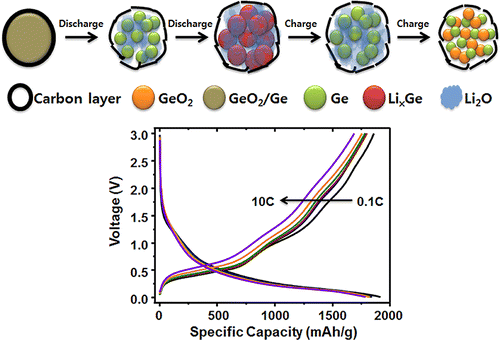Professor Zaiping Guo at the University of Wollongong’s Institute for Superconducting & Electronic Materials is working on improving lithium-ion batteries for use in electric vehicles, as well as portable devices like mobile phones, and her school proclaims a breakthrough.
Her team has developed a novel nanostructured Germanium (Ge)-based anode material for high-powered rechargeable lithium batteries.
Professor Guo, an Australian Research Council (ARC) QEII Fellow, said the development of this inexpensive manufacturing technique is a breakthrough that will provide a significant improvement in battery technology, which can be used to power the next generation of clean-tech electric cars.
“The novel anode materials are very simple to synthesize and cost-effective,” she said.
“They can be fabricated in large-scale by industry, therefore have great commercial potential.”
In tests, Ge-based cells have five times more energy storage and the potential to go at least twice as far on a charge as batteries used in current electric vehicles, according to the University.
“This equates to more than a 2 times improvement in lithium-ion battery capacity, and significant reduction in charging time for batteries used in consumer electronics, electric vehicles and grid-scale energy storage,” Professor Guo said.
“We’re truly excited about this breakthrough and are looking forward to transitioning this technology to the commercial marketplace.”
The research was recently published in ACS Nano Letters for February 4, under the title, “Catalytic Role of Ge in Highly Reversible GeO2/Ge/C Nanocomposite Anode Material for Lithium Batteries”, and in the journal, Angewandte Chemie.last June as, “Self-Assembled Germanium/Carbon Nanostructures as High-Power Anode Material for the Lithium-Ion Battery.”
The abstract from Nano Letters gives some hard numbers: GeO2/Ge/C anode material synthesized using a simple method involving simultaneous carbon coating and reduction by acetylene gas is composed of nanosized GeO2/Ge particles coated by a thin layer of carbon, which is also interconnected between neighboring particles to form clusters of up to 30 μm. The GeO2/Ge/C composite shows a high capacity of up to 1860 mAh/g and 1680 mAh/g at 1 C (2.1 A/g) and 10 C rates, respectively. This good electrochemical performance is related to the fact that the elemental germanium nanoparticles present in the composite increases the reversibility of the conversion reaction of GeO2. These factors have been found through investigating and comparing GeO2/Ge/C, GeO2/C, nanosized GeO2, and bulk GeO2.
(For comparison, graphite-based anodes in lithium batteries typically have capacities of 300 to 400 mAh/g.)
The précis from Angewandte Chemie is more direct: “Simple and powerful: Two germanium/carbon nanostructures were synthesized through a facile self-assembly method. Controlling the size of the precursor germanium nanoparticles produces cluster and non-clustered nanostructures.”
Researchers included Kuok Hau Seng, Mi-hee Park ‡, Zai Ping Guo ,Hua Kun Liu, and Jaephil Cho – the latter from the Interdisciplinary School of Green Energy, Ulsan National Institute of Science and Technology (UNIST) and a speaker at the 2009 CAFE Foundation Electric Aircraft Symposium.
Professor Guo spoke about this breakthrough at the UOW Big Ideas Festival on Wednesday, May 8.

